Conquer Kerbol: A Guide to Efficient Interplanetary Travel with a Reusable Space Tug in KSP2 So, you've mastered Kerbin orbit and landed on the Mun.

So, you've mastered Kerbin orbit and landed on the Mun. Duna seems like a short hop away, but the bills are piling up after each disposable rocket launches. Sound familiar? As a seasoned aerospace engineer (in the Kerbal universe, at least!), I've spent countless hours optimizing interplanetary travel in Kerbal Space Program 2 Career Mode. Today, I'm sharing my proven, meticulously documented space tug design to help you explore the Kerbol system without bankrupting your space program. This guide focuses on a reusable nuclear-powered, ion-propelled orbital space tug that's both efficient and reliable. Let's get started!
I. Context: The Interplanetary Tug Problem
Traditional chemical rockets are great for getting off Kerbin, but their high cost, limited delta-v (Δv), and single-use nature make them impractical for frequent interplanetary missions in Career Mode. Each trip to Duna becomes a budget-busting event, hindering your ability to establish long-term bases or conduct extensive research.
Enter the reusable space tug. By combining nuclear and ion propulsion, we can achieve:
- High Δv: Enabling multiple trips to distant planets on a single fuel load.
- Efficient Thrust: Combining powerful nuclear engines for initial burns with efficient ion engines for fine-tuning trajectories.
- Low Mass: Optimizing our design to minimize dry mass, further improving Δv.
- Reliability: Using proven parts in a stable configuration.
- Reusability: Designing the tug to return to Kerbin orbit for refuelling and payload deployment.
- Manageable PC Performance Impact: Keeping the part count reasonable to minimize lag.
Our design goals are ambitious, but achievable. Let's build this beast!
II. Step-by-Step Construction Guide
Fire up the Vehicle Assembly Building (VAB), and let's get building. This design uses readily available parts in Career Mode, so you should be able to replicate it relatively easily.
A. Core Stage:
The core stage provides structural integrity and initial lift.
- Start with a Kerbodyne KR-2L+ "Rhino" liquid fuel engine as the central structural element. This engine won't be fired in space, but acts as an excellent base for attaching other parts.
- Attach an Oscar-B Fuel Tank and LV-T30 "Reliant" Liquid Fuel Engine to the bottom of the Rhino using a TT-38K Radial Decoupler. These will be our disposable drop tanks for the initial Kerbin ascent.
- Attach a Rockomax Jumbo-64 Fuel Tank above the Rhino as the main fuel tank for the nuclear engine. Connect this tank directly to the Rhino.
B. Nuclear Propulsion:
The nuclear engine is the workhorse for interplanetary burns.
- Attach a single Poodle nuclear engine to the bottom of the Rockomax Jumbo-64 Fuel Tank using a TT-38K Radial Decoupler.
- Attach a Thermite Bore engine precooler directly to the top of the Poodle engine. This helps with thermal management.

C. Ion Propulsion:
Ion engines provide incredibly high specific impulse for efficient long-duration burns.
- Mount four Dawn ion engines radially around the central core, attached to the Rhino using TT-38K Radial Decouplers. Space them evenly.
- Add eight Xenon Container tanks arranged radially, providing ample Xenon gas. Attach them to the Rhino.
- Ensure each Xenon Container tank is connected to a PB-NUK Radioisotope Thermoelectric Generator (RTG).
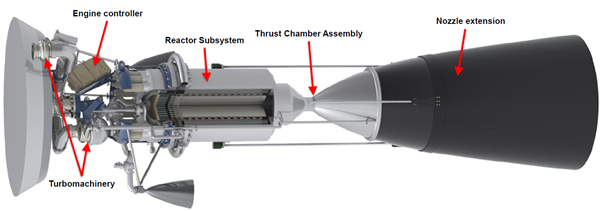
D. Power Generation:
Ion engines require a lot of power. RTGs provide a consistent, reliable power source.
- We've already added eight PB-NUK Radioisotope Thermoelectric Generators (RTGs), one connected to each Xenon tank. These will provide constant power for the ion engines, regardless of solar proximity.
E. Command and Control:
This section handles control of the space tug.
- Attach a Mk1-3 Command Pod at the top of the Rockomax Jumbo-64 Fuel Tank for crewed operation (optional; can be replaced with a probe core for unmanned missions).
- Include a Stayputnik Mk. 1 probe core for automated control and as a backup. Place this inline with the command pod.
- Add sufficient reaction wheels (integrated into the command pod and probe core) for SAS stability.
- Ensure a RCS Build Aid is included in the build for precise maneuvering.
F. Communications and Utilities:
Essential for communication and long-duration missions.
- Include a Communotron 16 antenna for communication with Kerbin.
- Add ample OX-STAT Photovoltaic Panels to recharge batteries during solar proximity, supplementing the RTGs.
III. Step-by-Step Strategy: Interplanetary Transfer
Now that we have our space tug built, let's learn how to use it.
A. Orbital Insertion:
- Launch the tug using the Rhino engine and the disposable Reliant engine.
- Jettison the Oscar-B Fuel Tank and LV-T30 "Reliant" Liquid Fuel Engine once they are empty.
- Continue to burn with the Rhino engine until you have reached a stable Kerbin orbit (approximately 100km).
B. Hohmann Transfer Burn:
- Use a transfer window planner like KSP Trajectory Optimization Tool (KSP TOT) to determine the optimal launch window and ejection angle for your target planet (e.g., Duna).
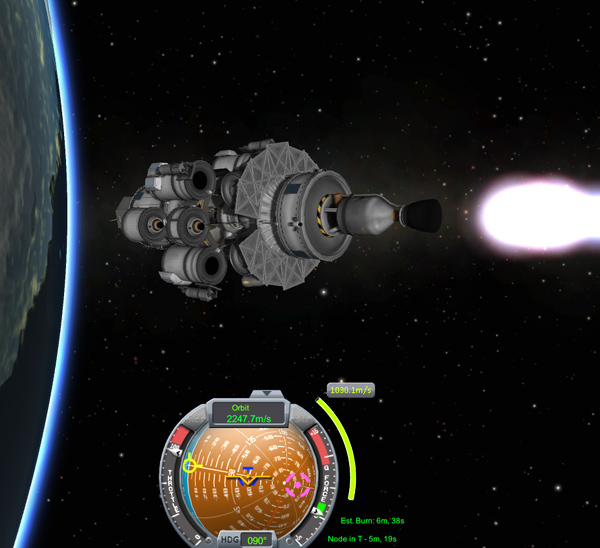
- Execute a prograde burn using the Poodle nuclear engine at the appropriate ejection angle to initiate the Hohmann transfer.
- Burn until your trajectory intersects with Duna's orbit.
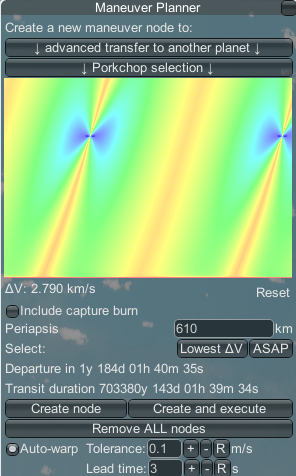
C. Mid-Course Corrections:
- During the transfer, use small RCS bursts and the Dawn ion engines to correct your trajectory.
- Aim for a close encounter with Duna.
D. Aerocapture (if applicable):
- If arriving at a planet with an atmosphere (e.g., Duna), perform an aerocapture maneuver to slow down and enter orbit.
- Aim for a periapsis altitude that will provide sufficient drag without burning up (around 15km-20km for Duna).
E. Orbital Circularization:
- Once inside Duna's sphere of influence, circularize your orbit at the desired altitude using the Poodle nuclear engine.
F. Payloads:
- Payloads should be attached to the craft via a Clamp-O-Tron docking port.
- Dock the payload to the tug, and then undock once in the desired location.
IV. Tips and Tricks:
- Delta-V Management: Use the Kerbal Engineer Redux mod to monitor Δv remaining in each stage. Ensure you have ample Δv for the entire mission (at least 6000 m/s for a Kerbin-Duna round trip).
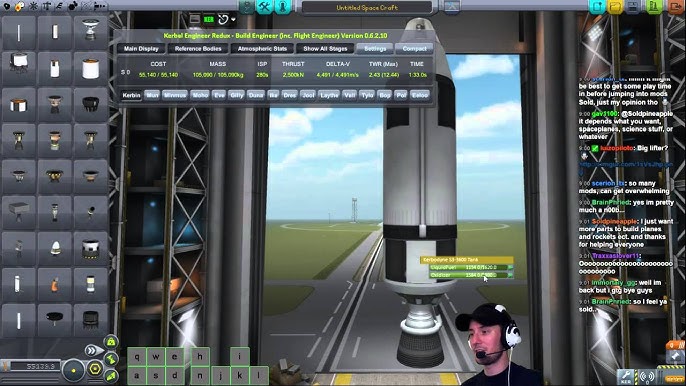
- Thrust-to-Weight Ratio (TWR): Maintain a TWR of at least 0.3 for efficient burns. The nuclear engine provides good thrust, while the ion engines are best used for fine-tuning trajectories.
- Specific Impulse (ISP): Maximize ISP by using the ion engines for long, low-thrust burns in deep space.

- Gravity Assists: Utilize gravity assists from other planets or moons to save Δv.
- Action Groups: Set action groups to easily toggle engine thrust. For example, assign action group 1 to toggle the Poodle engine and action group 2 to toggle the Dawn engines.
- Engine Efficiency: Reduce thrust limiter to conserve fuel, especially when using the nuclear engine for orbital adjustments. Start with a lower thrust limiter (e.g., 50%) and gradually increase it as needed.
V. PC-Specific Notes:
KSP2 can be demanding on PC hardware. Here are some tips to improve performance:
Performance Optimization:
- Reduce graphics settings (texture quality, shadow quality, anti-aliasing).
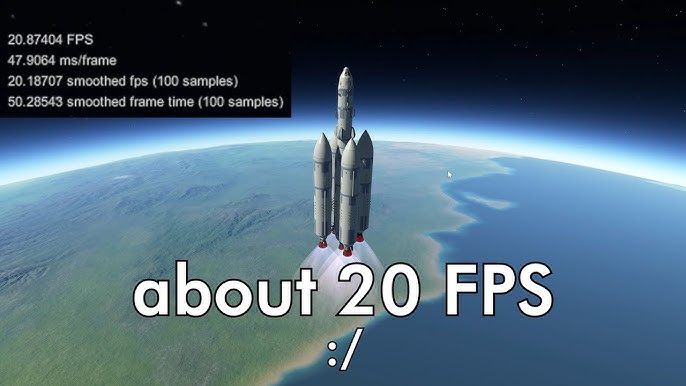
- Limit the number of parts in your vessel. Optimize your design to minimize unnecessary parts.
- Disable resource transfer crossfeed to reduce part connections.
- Close unnecessary background applications.
- Consider installing performance-enhancing mods if needed.
Control Mapping: Customize control mappings for precise throttle control and RCS activation. Consider using a joystick or flight stick for finer control.
Mod Recommendations: Essential mods include Kerbal Engineer Redux (for Δv information), MechJeb 2 (for automated maneuvers), and KSP Trajectory Optimization Tool (for transfer window planning).
VI. Conclusion:
By following this walkthrough, you'll gain the knowledge and skills to build and operate a reliable, reusable interplanetary space tug, enabling efficient and cost-effective exploration of the Kerbol system in Kerbal Space Program 2 Career Mode. This unlocks the potential for establishing permanent bases and conducting long-term missions on other planets. You'll also gain a deeper understanding of orbital mechanics and spacecraft design. So, strap in, engineers, and let's conquer the Kerbol system!